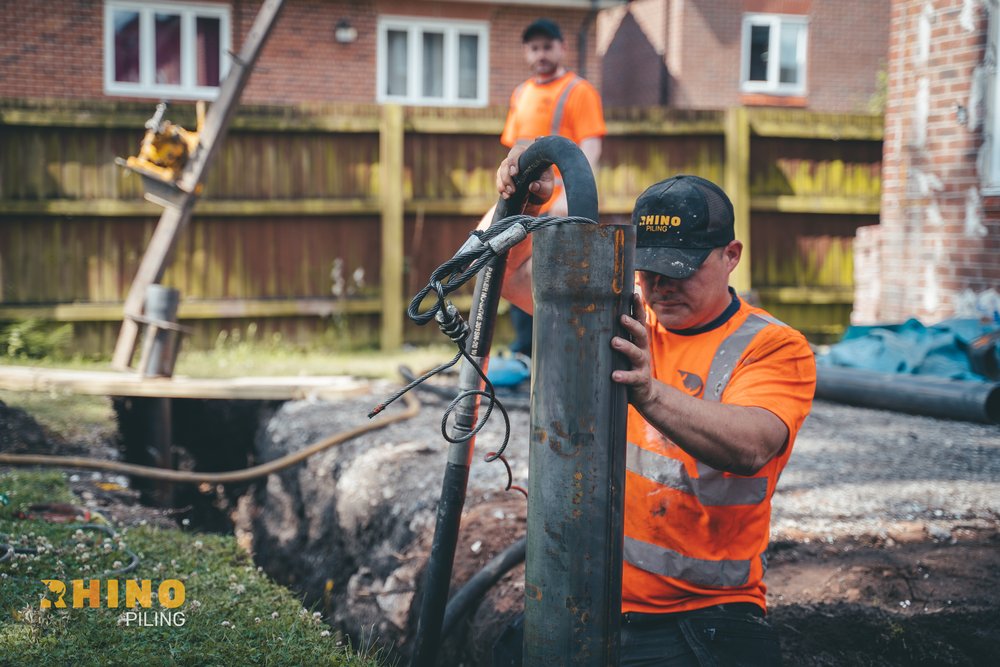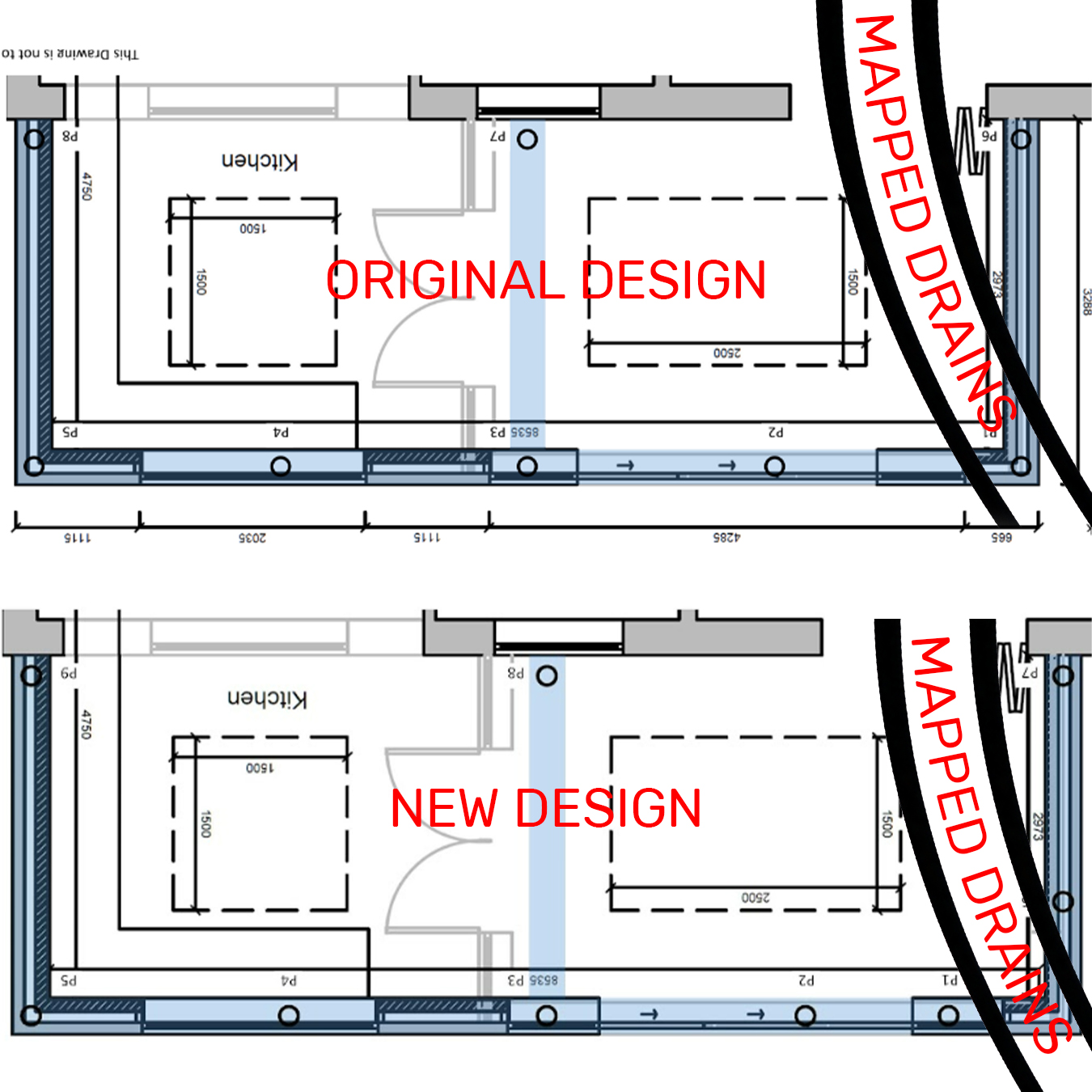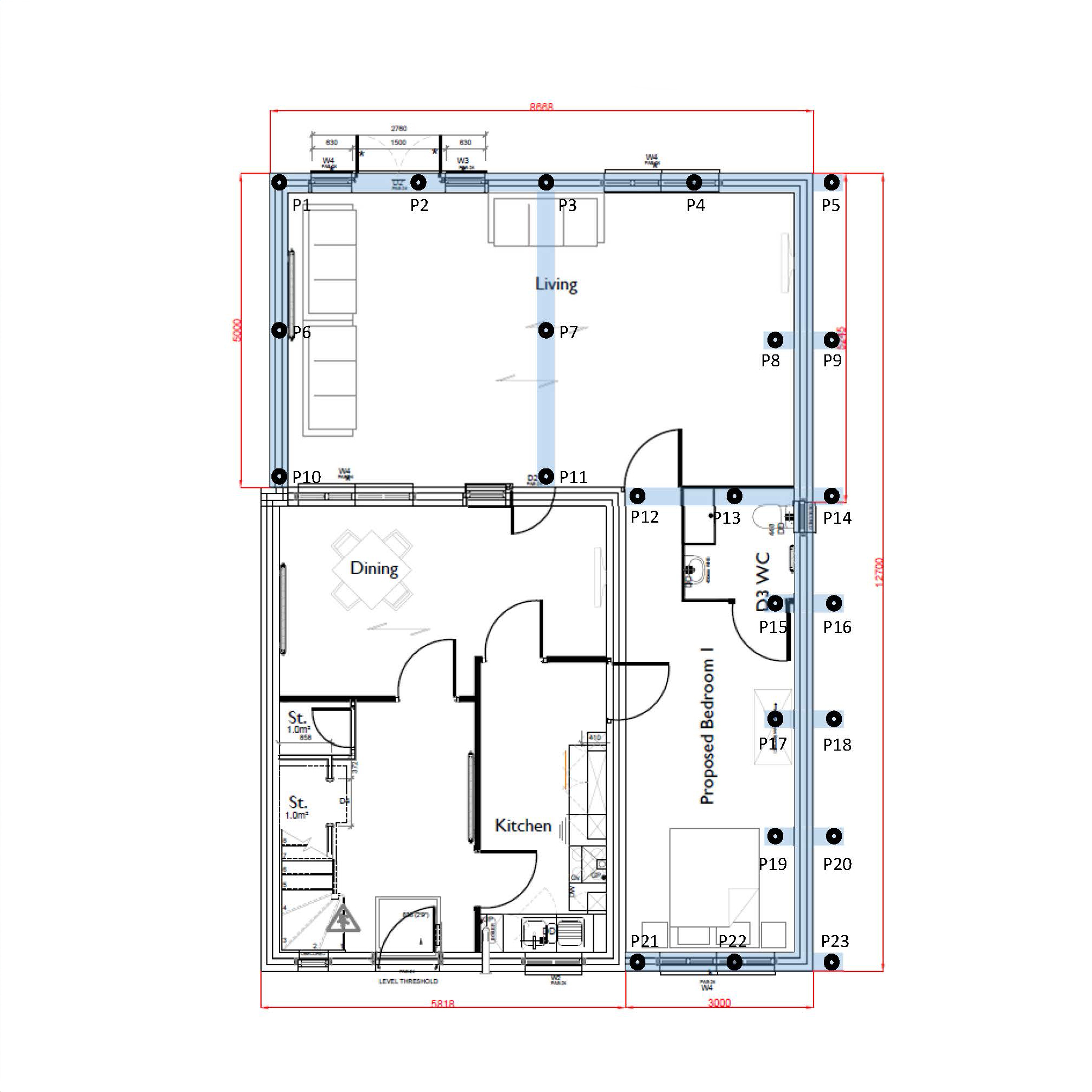Overcoming a drain, culvert or sewer is a common problem we find when installing foundations. Here’s a step-by-step overview of how we overcome a drain, culvert or sewer by using piling.
The first step is to identify the drain, culvert or sewer and find out it’s location in relation to the new foundation as well as it’s depth.
This is done by a specialist drain mapping company who will mark the drain up on site and also mark up your architects drawing showing where the drain, culvert or sewer runs in relation to the new building as well as its depth.
Once the drain, culvert or sewer have been identified, the depth has been confirmed as well as the vicinity to the new foundation, we are at a stage where we can come up with a design.
Rhino Piling will then come up with a design to overcome the drain, culvert or sewer, every design is different as no drain or new foundation are the same.
We use a range of techniques to overcome drians, culverts and sewers, here are some examples.
Cantilever
We can move piles to new locations to avoid the drain, culvert or sewer and use higher loaded piles and more dense steel work to allow piles to be installed out of the vicinity of the drain, culvert or sewer.
Pre Auguring
We pre augur beyond the depth of the drain, culvert or sewer, which then allows us to drive the piles from this depth. As the pile is driven beyond the depth of the drain, culvert or sewer, this removes the risk of material compaction drushing the drain, culvert or sewer.
Zip Piling
This method is used when the drain, culvert or sewer runs directly down the centre of the footing, we place the piles on the outside of the footing creating a zip effect.
Moving of piles
We can move piles outside the vicinity of the drain, culvert or sewer (within reason) to be out of the 45 degree angle of influence for compaction. We can also use bigger piles to allow us to achieve greated distance for moving the piles.
The piling works is undertaken by Rhino Piling with us being mindful of the presence of the drain, culvert or sewer.
We use a driven piling system, generally for this type of works we use a hand carried piece of piling equipment as it has the least amount of vibration and impact on any drains, culverts or sewers.
We install of all the piles and the steel work, ready for an inspection by building control.
Prior to concreting the installed piles and steel work a final survey is to be undertaken to check the condition of the drain, sewer or culvert.
This is done for two reasons, firstly to ensure no damage has happened to the drain, sewer or culvert during the piling works. Secondly, so that you have a record that the works which you have undertaken did not effect the drain, sewer or culvert so that if there is a problem in the future you can prove to the water board that it was not your works which have caused these problems.
Once the drain, culvert or sewer has been surveyed for the final time and the works have been inspected and passed by building control, the concrete is then installed to the piling & steel works, which then gives you a fully formed foundation, ready to install your brickwork onto.





